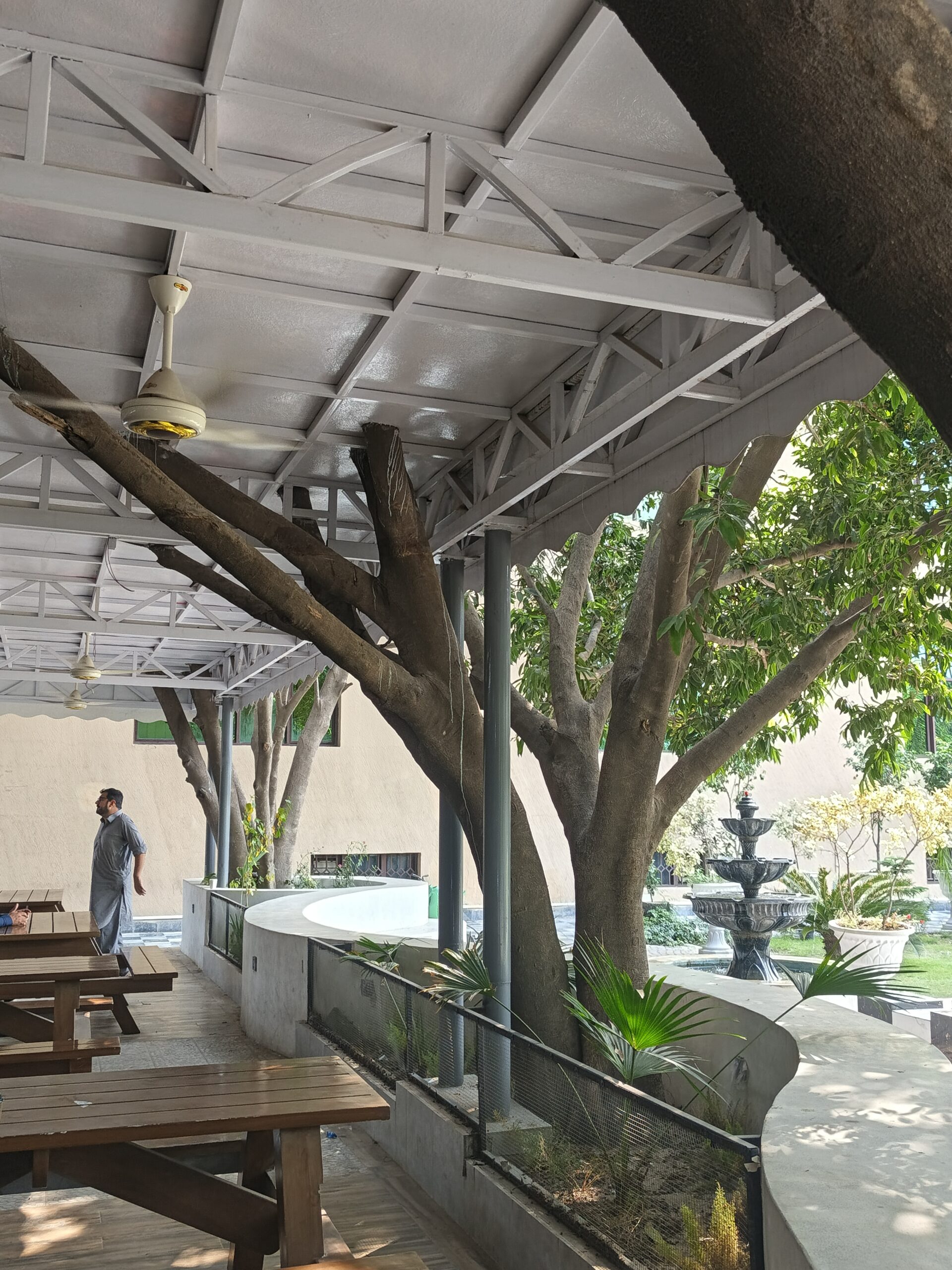When Form Follows Nature: Presence, Climate, and the Ethics of Space

Form follows nature.
Not as slogan. As method.
In an age of climate emergency, urban intensification, and sensory saturation, this principle becomes resistance.
It invites us to pause—not to impose geometry, but to observe ecology. To trace the shifting patterns of light,
wind, and memory. To let trees instruct. To let people inhabit.
This is not nostalgia. It is recalibration.
—
Designing for Presence Over Performance
Many institutional and urban landscapes—especially in South Asia—are overdesigned yet under-inhabited.
Courtyards paved in symmetry. Furniture detached from shade. Trees planted as tokens, not as co-authors.
The result: architecture that performs visually but fails experientially.
Designing for presence means rethinking metrics of success:
– From aesthetic spectacle to thermal comfort
– From permanence to adaptability
– From monumentality to human scale
– From ego to ecological empathy
It asks:
– Where does the body rest?
– Where does shade fall?
– Where does nature already resolve what we seek?
—
Placemaking as Spatial Listening
Placemaking is not a commodity. It is a practice of listening—between built form, climate, and human life.
At CECOS University, Peshawar, a modest café courtyard became a testbed for regenerative design.
The interventions were light-touch: planter-integrated seating, shaded café nodes, and modular cubes.
Yet each decision emerged from observation, simulation, and ecological intelligence.
Agent-based models revealed behavioral flows. Heatmaps traced thermal gradients.
Dwell-time analysis mapped where bodies lingered. These tools did not dictate; they mirrored.
They surfaced what the site already knew.
The curved bench did not merely encircle the trees. It recognized them as anchors, as temporal custodians of space.
—
The Quiet Intelligence of Planter Seating
Planter-integrated seating is not detail—it is infrastructure for comfort.
It blends rest with canopy, merges greenery with gathering, and creates edges that breathe.
In climates like Peshawar’s—where shade is survival—these interventions become bioclimatic devices:
cooling air, buffering heat, restoring intimacy between people and place.
This is urban furniture as ecological interface.
—
Simulation as Empathic Practice
Digital twins and microclimate simulations are often framed as technical. In reality, they are instruments of empathy.
They make visible the unseen:
– The drift of heat across a courtyard
– The choreography of avoidance around glare
– The fluid proximities of bodies seeking shade
In this way, simulation shifts from data science to design ethics—transforming sustainability into embodied experience.
—
Minimalism as Stewardship
Minimalism is not aesthetic austerity. In a climate-conscious age, it is ethical restraint.
To build only what is essential.
To let nature remain the protagonist.
To practice humility in design.
At CECOS, the trees were not obstacles to erase but guides to follow. The fountain was not replaced but reframed.
The café cart was not displaced but sheltered.
This is minimalism as stewardship of urban ecology.
—
Toward a Regenerative Urbanism
As climate pressures escalate and cities densify, design must evolve—not toward greater spectacle, but toward greater consciousness.
Placemaking must be:
– Climate-resilient
– Behaviorally intelligent
– Ecologically rooted
– Socially just
– Scaled to intimacy
– Framed by care
And above all, it must begin with listening.
“Form follows nature” is not metaphor. It is a regenerative ethic for urbanism in the Anthropocene.
